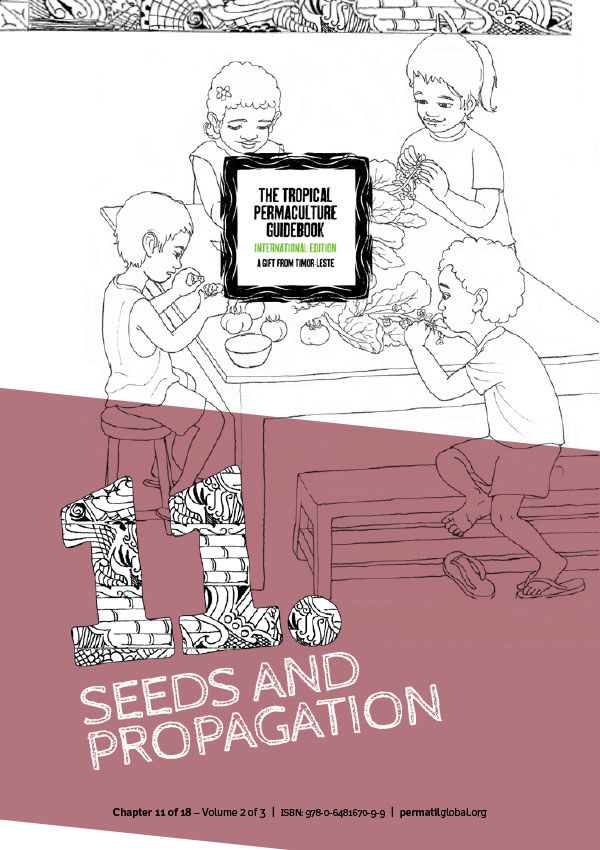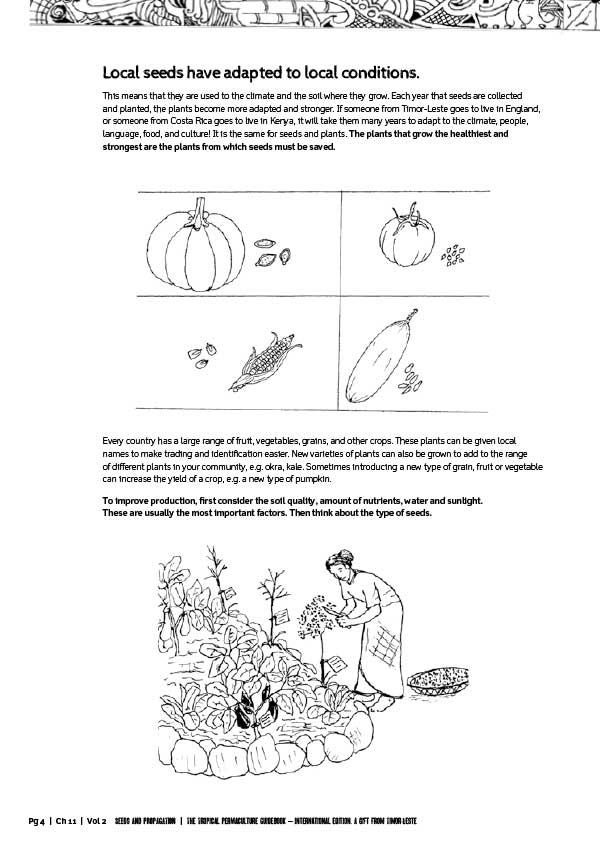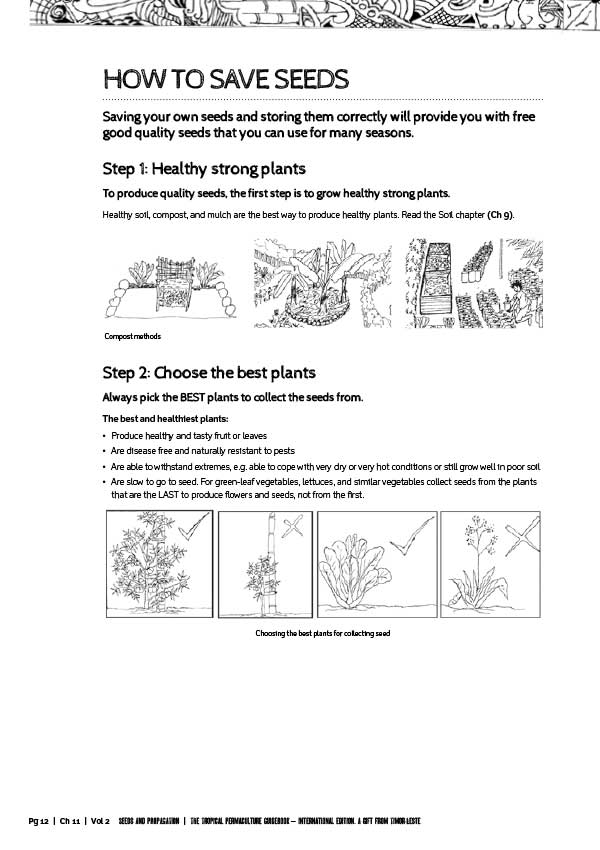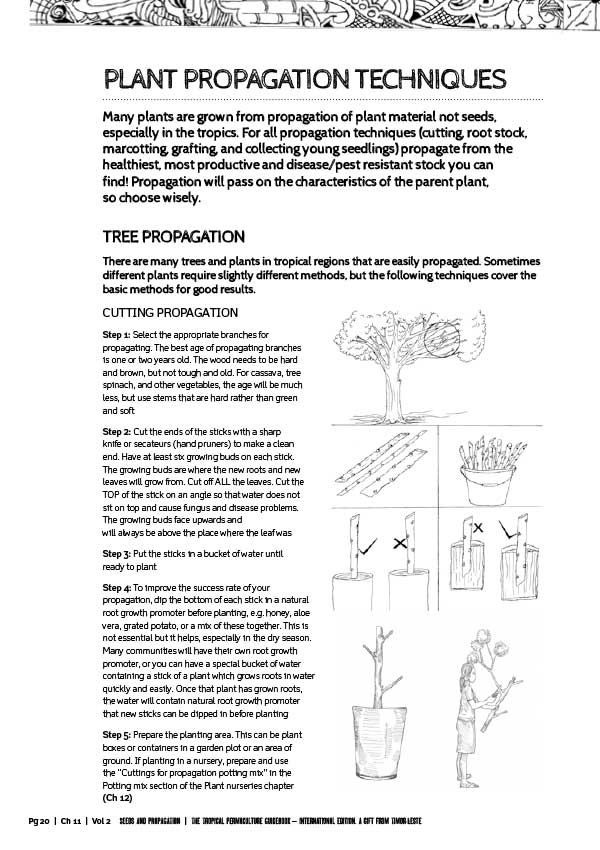Chapter 11. Seeds and propagation
36 pages
Saving and using local seeds is one of the most important methods for strengthening agriculture, increasing the variety of plants, and achieving food sovereignty… more
This chapter is available in two sizes:
3MB (slow internet connection)
6MB (fast internet connection)
Saving and using local seeds is one of the most important methods for strengthening agriculture, increasing the variety of plants, and achieving food sovereignty.
- Everyone can collect and save seeds: it is cheap and easy to do.
- Saving and exchanging local seeds will increase the amount and variety of food that is grown.
- Local non-hybrid seeds generally have a higher nutritional content.
- Seeds are valuable and can be exchanged for other seeds or sold through a community seed bank.
- When good techniques are used for selecting and saving good seeds, the plant quality naturally improves each year.
- If there are no local seeds available, families and farmers have to buy seeds and are reliant on companies rather than on themselves. This decreases community resilience.
- A well-stocked seed bank containing proven local varieties is one of the best protections a community can have against the uncertainties brought by climate change.
Use this chapter to learn how to save and store high quality seed, both individually as as a community collective, and how to use a variety of propagating methods.
Contents include:
- Why save seeds?
- How to save seeds
– Step 1: healthy strong plants
– Step 2: choose the best plants
– Step 3: how to collect the seeds
– Step 4: cleaning the seeds
– Step 5: drying the seeds
– Step 6: storing the seeds
– Step 7: using the seed and plant material - Plant propagation techniques
- Community seed and plant group
- Responsible seed and plant use






